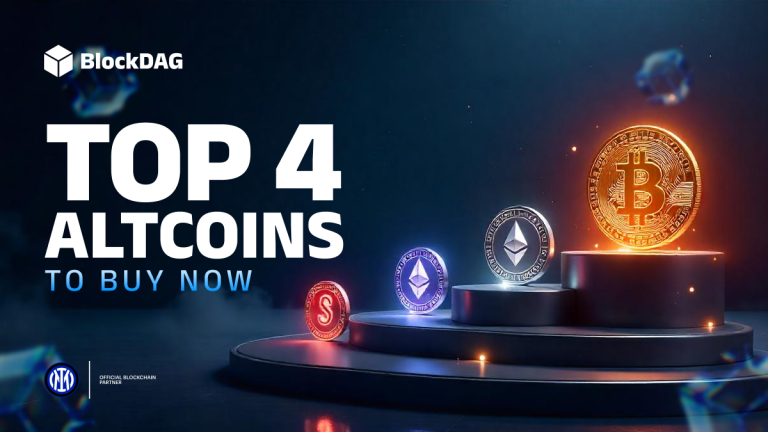Can Code Prove BlockDAG Legitimacy? What the Working Testnet Reveals
| Disclosure: This post is a paid advertorial contributed by a third party. It is separate from our editorial opinions and is not intended as financial advice. |
As the crypto industry matures, developer interest increasingly hinges on more than just presale hype or tokenomics. Infrastructure matters, and so does access. In this context, BlockDAG’s legitimacy is being measured not by marketing promises but by functional delivery.
The Awakening Testnet, smart contract audits, and early integration with DAG-based validation provide a tangible framework for real-time technical evaluation. Developers can interact with live components, observe consensus behaviour, and explore protocol capabilities.
While mainnet launch remains ahead, the available toolset already demonstrates practical architecture, offering rare transparency and developer traction for a project still in its presale phase.
Active Testnet & Technical Infrastructure
BlockDAG’s legitimacy in technical circles begins with the status of its test environment. The Awakening Testnet is live and publicly accessible, allowing developers and early users to engage with core blockchain features. The testnet is designed to simulate mainnet functions and includes working integrations for miner connectivity via Stratum Protocol, enabling real-time block validation and rewards distribution testing.
Unlike many presale projects that provide only theoretical frameworks or simulate results in closed systems, BlockDAG invites participation and feedback. Network activity and miner onboarding can be observed in real time, providing strong evidence that infrastructure has moved beyond the conceptual stage. This accessible testnet confirms BlockDAG’s ability to handle transaction flows, consensus mechanics, and cross-node communication under stress conditions.
Developers assessing whether BlockDAG is technically viable before its mainnet launch can examine live logs, synchronisation speeds, and node response behaviour. This level of transparency offers a practical benchmark rarely provided during a presale phase.
DAG + Proof-of-Work Consensus Model
BlockDAG’s core architecture is a hybrid model combining Directed Acyclic Graph structures with Proof-of-Work validation. In contrast to pure PoW systems like Bitcoin, the DAG integration is intended to increase scalability without compromising on decentralisation or miner incentives.
From a protocol design perspective, this hybrid approach aims to solve two major challenges: transaction throughput and parallel validation. Traditional blockchain structures are linear, creating bottlenecks in confirmation speed. By allowing multiple branches to exist concurrently through DAG topology, BlockDAG’s system increases data propagation and verification efficiency.
The current testnet implementation provides developers with an environment to test block finality, miner timing, and orphan handling. It also supports basic transaction packaging and fee structure testing, key areas that will determine network usability in a live setting. While full implementation details of the consensus algorithm are not yet open-sourced, the testnet delivers enough functionality for developers to verify the model’s baseline behaviour.
EIP-4337 & Account Abstraction Roadmap
One of the most significant developer-facing claims BlockDAG has made is its committment to EIP-4337 principles. This Ethereum Improvement Proposal outlines standards for account abstraction, allowing for programmable wallet behaviour and smart contract automation at the wallet level.
BlockDAG has indicated its roadmap includes the adoption of EIP-4337-compatible tooling, including modular plug-ins for custom wallet execution, signature aggregation, and on-chain authorisation controls. While not yet live, these integrations are referenced in the public documentation and are expected to be phased in as the project transitions from testnet to mainnet.
Developers interested in creating custom dApps on BlockDAG or building wallet layers with recovery, batch transactions, or gas abstraction will find this especially important. It shows a forward-facing commitment to modular and open development. EIP-4337 compatibility also enhances interoperability with future L2s or sidechains, something critical for long-term ecosystem scalability.
At this stage, technical documentation outlines how BlockDAG plans to incorporate these features, and developer resources are expected to expand as testnet milestones evolve. With over 27 billion coins sold, a fundraising figure exceeding nearly $435 million, and continuing visibility across blockchain media platforms, Turner’s role is increasingly central to BlockDAG’s narrative.
Audit Verification and Smart Contract Review
To validate its security posture, BlockDAG has completed smart contract audits with both Halborn and CertiK. These reviews are publicly disclosed, and the team has confirmed that any critical vulnerabilities have been addressed before public token issuance.
For developers evaluating legitimacy, these audits are not only a risk management signal but a baseline requirement for running production-ready dApps. While audits do not guarantee bug-free deployment, they do demonstrate that code quality and architecture are being reviewed under professional standards.
Furthermore, BlockDAG has adopted practices from these audits into its future roadmap, including automated testing frameworks and versioned contract releases. These details are outlined in their technical summary reports and give developers confidence that core systems are being built for maintainability.
Developer Experience and Public Documentation
BlockDAG’s documentation portal provides developers with access to API references, network architecture diagrams, and basic testnet usage guides. While still growing, the documentation includes endpoint instructions for wallet integration, miner setup, and RPC interaction. These are critical components for any project hoping to attract a developer community.
The project has also committed to open-sourcing selected modules post-mainnet, which could include wallet SDKs and contract templates. While this remains speculative until files are published, the existing documentation provides enough detail for developers to run basic simulations and test wallet interactions.
BlockDAG’s Technical Claims Backed by Functionality
BlockDAG’s legitimacy from a technical standpoint is supported by several active and verifiable components. The Awakening Testnet offers real-time experimentation with the protocol’s DAG and Proof-of-Work system. The presence of audited smart contracts, early DAG-based validation, and working miner setups all point to a maturing platform. The groundwork for EIP-4337 compatibility, though not yet finalised, is clearly laid out in the roadmap and developer materials.
While full on-chain transparency will become available only after the mainnet launch, developers can already test, verify, and engage with key parts of the infrastructure. BlockDAG is not asking for blind trust. It is providing tools, documentation, and access that support its legitimacy claims with technical proof. For developers, that makes BlockDAG a project worth watching as it moves from testnet into full deployment.
Presale: https://purchase.blockdag.network
Website: https://blockdag.network
Telegram: https://t.me/blockDAGnetworkOfficial
Discord: https://discord.gg/Q7BxghMVyu
| Disclaimer: The text above is an advertorial article that is not part of bitcoininfonews.com editorial content. |




